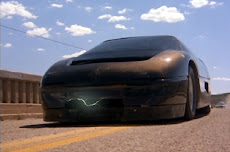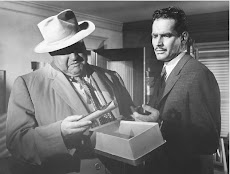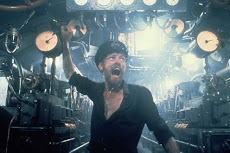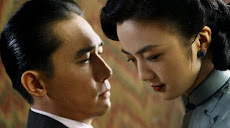This post is a departure from high and low-brow commentary on film, and I will instead write about how I joined with friends here in Cheyenne, Wyoming to make a short film, entitled "The First Batch," entered a competition and then won said competition.
This was the fifth year of The Shoot Out Cheyenne, a unique short film competition. In previous years, the Shoot Out required teams to produce a seven minute (or less) film in 24 hours, filming sequentially with editing limited to what could be done within a camera. Teams also had to include a number of locations, props, and a certain phrase in their films. I never participated in the Shoot Out before, but attended the screening of the top ten films two years ago and was pleasantly surprised at what teams (almost all amateurs) were able to come up with.
This year, the Shoot Out expanded to a two week window, allowing teams two weeks to produce their film from September 20 to October 4. The rules also removed all restrictions on postproduction. However, mis en scene requirements remained, and in addition to these teams had to include at least one of four plot elements in their films.
In the next few paragraphs I'll describe what I believe were the most important facets of producing "The First Batch," our highs and our lows, and include why I believe we ultimately took first prize. I would like to think this will be useful advice for future competitors, but it's quite possible the rules of the Shoot Out will experience another shake-up next year. (As Ice Cube would say, I'm down for whatever.) It appears, however, this is the new format going forward, as the festival is in the process of re-naming itself the FAST Filmmaking Festival.
Pre-production
For the Shoot Out, until one receives the brief describing the mis en scene and plot requirements I believe there is no reason to write a script or even try to hammer out a story. (I believe this is also technically against the rules.) It's simply too cumbersome and, frankly, strikes me as silly to write a story and then superimpose it over the Shoot Out's requirements. At times I thought of the requirements as silly hurdles, but ultimately embraced them as part of my story. Without detracting from others' films, it was obvious that some filmmakers did not follow this paradigm.
Having said that, I brought along some ideas for a story, one of which was the obvious choice from the beginning: Wyoming Whiskey.
A Brief Tangent:
When it was released in December of 2012, Wyoming Whiskey garnered a lot of buzz across the state. The first batch sold out very quickly, with plenty of people getting ahold of entire cases.
Despite the fanfare, and even high praise from so-called connoisseurs, since the release of the first batch a certain truth has settled in among most of us drinkers here in Wyoming: Wyoming Whiskey doesn't taste good. In fact, the first batch was awful. I believe the whiskey is still only distributed and sold in-state, and when I purchased a bottle to use as a prop it was labeled batch 14, bottled in June of this year. Upon tasting it, the recent batch is certainly an improvement, but the whiskey still has a long way to go before I'll pay $40-$60 for a fifth of it.
Needless to say, these days there are a lot of people with bottles from early batches of Wyoming Whiskey that are nearly full and are gathering dust in the liquor cabinet. And at plenty of bars across Wyoming, the quickest way to tell if a patron is from out of state is if he orders a glass.
|
The whiskey's first batch was pretty dreadful, but it seems no one will say it publicly. Some would call this patriotism (after all, it's Wyoming's only whiskey brand), some prudence (the governor's brother is a partner in the company) and others humility (what the heck do most of us know about making whiskey, anyway). I saw it another way: opportunity.
I wrote the script over two evenings, Monday, Sept. 23 and Tuesday, Sept. 24. I then circulated it among potential team members, five of six of whom would come aboard for production. We made very few changes, but team members were also free to reword their lines during production for better flow or humor. Since only Jordan Estes had serious acting experience, I wrote the script with each character being pretty much like the person playing said character. This definitely put everyone at ease.
Having the script in advance was invaluable. Actors had plenty of time to read over their lines, collect props, and get into the mindset that we were going to shoot a movie. With very few changes, we planned to shoot as much as we could in one day, Saturday, Sept. 28. Finally, although I did not set up the tabs properly, having a seven-page script written in 12-point Courier New went a long way toward keeping us near the running time of 7 minutes.
We completed production in almost one day, Saturday, Sept. 28, with one remaining scene on Sunday, Sept. 29. Locations were Phoenix Books & Music, the Peacock Alley from Capitol Avenue to the Plains Hotel, my apartment (backyard and kitchen), The Suite Bistro (formerly Suite 1901), and Happy Jack Road a few miles west of Cheyenne.
Who needs an enclosed viewfinder, anyway?
We shot the film on a Sony CyberShot DSC-RX100. This is an excellent digital camera, meant primarily for shooting stills. It is compact but with a fairly sizeable lens and around 20 megapixel sensor. Its manual settings for filming leave much to be desired, but the camera did the job and shoots at full 1080p with a respectable microphone. Because of its size, even with steady-shot features it is not something I would attempt to film with hand-held. I expected to use a tripod for most shots until Matt Erickson came up with a homemade steady-cam:
This gave us a lot more freedom and enabled us to have some moving shots with fluidity that cannot be achieved on a tripod.
Because we planned everything in advance (Phoenix Books at 10 AM, The Suite at 4 PM, the apartment shots in between, Happy Jack road around sunset), we were not stressed and seldom rushed. The only pressure was shooting the bar scene shortly after The Suite opened (so as to avoid customers in the background) and shooting the poker scene in the basement quickly while they shut the music off (to avoid copyright issues). But we were able to rehearse these scenes quickly-- the poker scene was completed in roughly two takes, around 10 minutes of actual shooting.
The filming was a riot. Everyone who participated had fun, and I think that's apparent in the final film. There was no pressure to win the contest, just to complete the film and have a respectable final product. Morning bloody marys and end-of-the-day cocktails helped, too.
Post-production
We ended up extending a fair number of scenes during shooting and taking a few alternative shots, and this was a good idea, but even before I began assembling the film on the evening of Sunday, Sept. 29, I knew we'd have to cut most of the additions out. Even so, I imagine if we included everything we wanted the film would still come in at under 9 minutes; although we had to sacrifice the extras, our entire story was told within the 7 minute limit.
I used Sony's Vegas Movie Studio HD v. 11.0. Years ago, when I was doing videography in high school with a Digital8 camcorder, I fondly remember using Sony's MovieShaker program. Vegas is more complex, but still just as intuitive as MovieShaker. It also has an outstanding subject-by-subject help program. I don't believe it stacks up to Adobe Premiere, but for amateur filmmaking it's outstanding (and about 1/8 the price).
My initial rough cut (again, having immediately cut some scenes) came in at around 7 minutes, 30 seconds. By the evening of Monday, Sept. 30, by trimming just a few seconds here, a few seconds there from certain scenes (as well as adding transitions), the film was already floating around 7 minutes. All told, it took about seven hours of editing to assemble what I considered a submission-worthy cut.
Much like the script and preproduction, it was helpful to have a few days to simply finesse the final cut. Vegas could export the cut in about an hour, and I could upload it to YouTube in about an hour as well. With YouTube's security features, I was able to share the cuts with everyone via gmail with restricted viewing, so they could view the film at work or on a smartphone and offer comments via e-mail.
On Wednesday, Oct. 2, I received a call from Matt Erickson. I had intended to submit the film without music, having struck out trying to find a local artist who would let us sample his or her music for free, but Matt felt it was incomplete. By Thursday evening (Oct. 3), Matt had sent me a cut of a full song as well as a few guitar riffs that were very easy to lay over the transitions, poker scene and credits. I believe this happened at just the right time; Matt knew how long the song had to be for the end credits and it serendipitously fit over the poker scene as well.
On Friday morning, Oct. 4, I exported the final cut and submitted it to the Shoot Out with an e-mail link at 4 p.m., two hours before the 6 p.m. deadline.
I used Sony's Vegas Movie Studio HD v. 11.0. Years ago, when I was doing videography in high school with a Digital8 camcorder, I fondly remember using Sony's MovieShaker program. Vegas is more complex, but still just as intuitive as MovieShaker. It also has an outstanding subject-by-subject help program. I don't believe it stacks up to Adobe Premiere, but for amateur filmmaking it's outstanding (and about 1/8 the price).
My initial rough cut (again, having immediately cut some scenes) came in at around 7 minutes, 30 seconds. By the evening of Monday, Sept. 30, by trimming just a few seconds here, a few seconds there from certain scenes (as well as adding transitions), the film was already floating around 7 minutes. All told, it took about seven hours of editing to assemble what I considered a submission-worthy cut.
Much like the script and preproduction, it was helpful to have a few days to simply finesse the final cut. Vegas could export the cut in about an hour, and I could upload it to YouTube in about an hour as well. With YouTube's security features, I was able to share the cuts with everyone via gmail with restricted viewing, so they could view the film at work or on a smartphone and offer comments via e-mail.
On Wednesday, Oct. 2, I received a call from Matt Erickson. I had intended to submit the film without music, having struck out trying to find a local artist who would let us sample his or her music for free, but Matt felt it was incomplete. By Thursday evening (Oct. 3), Matt had sent me a cut of a full song as well as a few guitar riffs that were very easy to lay over the transitions, poker scene and credits. I believe this happened at just the right time; Matt knew how long the song had to be for the end credits and it serendipitously fit over the poker scene as well.
On Friday morning, Oct. 4, I exported the final cut and submitted it to the Shoot Out with an e-mail link at 4 p.m., two hours before the 6 p.m. deadline.
Screening
The Shoot Out hosted a reception for filmmakers on the evening of Saturday, Oct. 5, followed by a concert that was open to the public. The reception was an excellent time to meet other filmmakers and discuss our projects. There are two rounds of judging by 17 judges (I'm unsure of the breakdown, that is, how many judges per round). Criteria is confidential. Twenty-six teams entered the competition, but I believe about a dozen or so teams submitted films.
The screening of the top 10 films took place in the early afternoon on Sunday, Oct. 6. The Shoot Out is run with significant help from volunteers and screened at the historic Atlas Theater downtown. It took awhile to get things up and running (well past the scheduled start time), but once the film screenings began they moved at a good pace.
I was confident we would make the top 10 but had no serious expectations that we would win the competition. The results bear this out: there were at least two films with superior cinematography to our entry ("Circles," "Letters to Dryden"), far better sound and music editing (though I stand by Matt Erickson's original piece "Code of the West"), and better acting. Although ours was a comedy, at least one entry drew far better laughs from me ("Ghost Story"), but I was certainly accustomed to our film by the time we screened it.
I believe our ultimate victory came from having the feel of a complete film. Especially with the required mis en scene, numerous entries either left some out entirely (leading to disqualification) or threw them in as out-of-place set pieces. Also, without getting specific, many films with a lot of potential suffered from either dead air (that is, minutes of boring filler) or being discombobulated. One team admitted to shooting 40 minutes of film and then trying to assemble a 7-minute story: indeed, lesson learned. Finally, many teams kept to the spirit of the old Shoot Out format and ended up making their films in the last few days. If anything, I hope I've illustrated the wisdom of time management under the new format.
So, to my surprise, this project ended up being a profit-making venture. After taxes, the price of a fifth of Wyoming Whiskey, Matt's steady-cam, the video editing software... we're looking at about $250 extra!
Time to take the team out for a good meal.
And, here it is:
The Shoot Out hosted a reception for filmmakers on the evening of Saturday, Oct. 5, followed by a concert that was open to the public. The reception was an excellent time to meet other filmmakers and discuss our projects. There are two rounds of judging by 17 judges (I'm unsure of the breakdown, that is, how many judges per round). Criteria is confidential. Twenty-six teams entered the competition, but I believe about a dozen or so teams submitted films.
The screening of the top 10 films took place in the early afternoon on Sunday, Oct. 6. The Shoot Out is run with significant help from volunteers and screened at the historic Atlas Theater downtown. It took awhile to get things up and running (well past the scheduled start time), but once the film screenings began they moved at a good pace.
I was confident we would make the top 10 but had no serious expectations that we would win the competition. The results bear this out: there were at least two films with superior cinematography to our entry ("Circles," "Letters to Dryden"), far better sound and music editing (though I stand by Matt Erickson's original piece "Code of the West"), and better acting. Although ours was a comedy, at least one entry drew far better laughs from me ("Ghost Story"), but I was certainly accustomed to our film by the time we screened it.
I believe our ultimate victory came from having the feel of a complete film. Especially with the required mis en scene, numerous entries either left some out entirely (leading to disqualification) or threw them in as out-of-place set pieces. Also, without getting specific, many films with a lot of potential suffered from either dead air (that is, minutes of boring filler) or being discombobulated. One team admitted to shooting 40 minutes of film and then trying to assemble a 7-minute story: indeed, lesson learned. Finally, many teams kept to the spirit of the old Shoot Out format and ended up making their films in the last few days. If anything, I hope I've illustrated the wisdom of time management under the new format.
So, to my surprise, this project ended up being a profit-making venture. After taxes, the price of a fifth of Wyoming Whiskey, Matt's steady-cam, the video editing software... we're looking at about $250 extra!
Time to take the team out for a good meal.
And, here it is:
Mandatory Items:
Art Scape Magazine - 0:06
Visit Cheyenne "Live the Legend" - 4:08
Smash Cuts - 3:14, 5:33, 5:40
Seven of Eleven Optional Items:
Hemingway Plot Element - 0:10
The Phrase - 2:00
Location (Peacock Alley, Plains Hotel) - 1:18
Location (Wyoming / Cheyenne Historic books section, Phoenix Books and Music) - 0:01
Prop (Cowboy boot) - 0:59
Prop (Dead Man's Hand) - 3:01
Prop (String of pearls) - 1:26
(The entire brief, with all of the item options, is available here.)














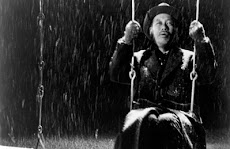

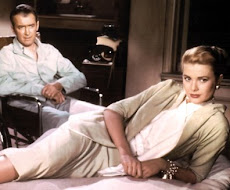_01.jpg)





